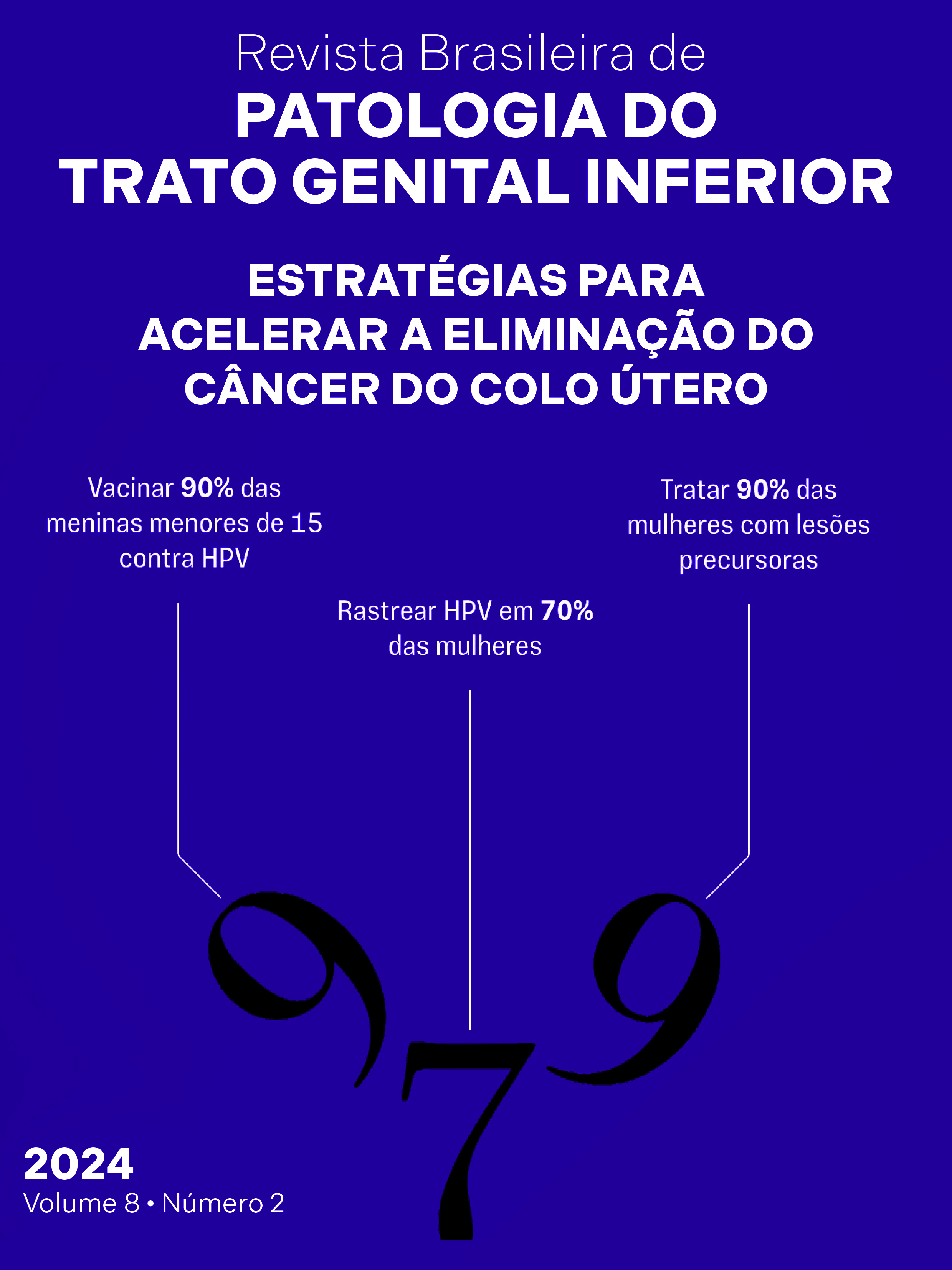Misdiagnosed lesions in cervical pathology: how to intervene?
DOI:
https://doi.org/10.5327/2237-4574-2024820009Keywords:
cancer, cervix uteri, diagnosisAbstract
Equivocal lesions are those with uncertain biological behavior, whose atypias complicate interpretation and directly impact
therapeutic management, potentially causing delays in treatment or overtreatment. One-third of these lesions refer to atypias
previously classified as cervical intraepithelial neoplasia grade 2 (CIN2). The uterine glandular epithelium also presents a
large number of equivocal lesions, with atypias that do not always indicate neoplasia. In these cases, complementary tests,
such as p16 immunoexpression, are crucial for a more accurate diagnosis and proper management. The p16 helps identify
lesions with malignant potential, especially useful in cytology and histopathology. However, its abnormal expression does
not provide a definitive prognosis, as the progression of lesions depends on immunological, hormonal, and genetic factors.
The practice of personalized medicine, considering the patient’s history and risk profile, is essential for more assertive and
effective treatment decisions
References
Pruski D, Przybylski M, Millert-Kalinska S, Zmaczynski A, Jach R.
Histopathological discrepancies between colposcopy-directed biopsy
and LEEP-conization observed during SARS-CoV-2 pandemic. Ginekol
Pol. 2023;94(1):12-8. https://doi.org/10.5603/GP.a2022.0081
Maniar KP, Sanchez B, Paintal A, Gursel DB, Nayar R. Role of the
biomarker p16 in downgrading -IN 2 diagnoses and predicting highergrade lesions. Am J Surg Pathol. 2015;39(12):1708-18. https://doi.
org/10.1097/PAS.0000000000000494
Tao AM, Zuna R, Darragh TM, Grabe N, Lahrmann B, Clarke MA, et al.
Interobserver reproducibility of cervical histology interpretation
with and without p16 immunihistoquemistry. Am J Clin Pathol.
;161(2):202-9. https://doi.org/10.1093/ajcp/aqae029
Mody DR, Thrall MJ, Krishnamurthy S. Diagnostic pathology:
cytopathology. 2nd ed. Philadelphia: Elservier; 2018.
Nayar R, Wilbur DC. The pap test and Bethesda 2014. Cancer
Cytopathol. 2015;123(5):271-81. https://doi.org/10.1002/cncy.21521
Staebler A, Sherman ME, Zaino RJ, Ronnet BM. Hormone receptor
immunohistochemistry and human papillomavirus situ hybridization
are usefulfor distinguishing endocervical and endometrial
adenocarcinomas. Am J Surg Pathol. 2002;25(8):998-1006. https://
doi.org/10.1097/00000478-200208000-00004
Waxman AG, Chelmow D, Darragh TM, Lawson H, Moscicki AB.
Revised terminology for cervical histopathology and its implications
for management of high-grade squamous intraepithelial lesions
of the cervix. Obstet Gynecol. 2012;120(6):1465-71. https://doi.
org/10.1097/aog.0b013e31827001d5
Höhn AK, Brambs CE, Hiller GGR, May D, Schmoeckel E, Horn LC. 2020
WHO Classification of Female Genital Tumors. Geburtshilfe Frauenheilkd.
;81(10):1145-53. https://doi.org/10.1055/a-1545-4279
Liao GD, Kang LN, Chen W, Zhang X, Liu XY, Zhao FH, et al. p16
immunohistochemistry interpretation by nonpathologists as an
accurate method for diagnosing cervical precancer and cancer. J
Low Genit Tract Dis. 2015;19(3):207-11. https://doi.org/10.1097/
LGT.0000000000000080
Perkins RB, Smith DL, Jeronimo J, Campos NG, Gage JC, Hansen N,
et al. Use of risk-based cervical screening programs in resourcelimited settings. Cancer Epidemiol. 2023;84:102369. https://doi.
org/10.1016/j.canep.2023.102369
Perkins RB, Wentzensen N, Guido RS, Schiffman M. Cervical cancer
screening: a review. JAMA. 2023;330(6):547-58. https://doi.
org/10.1001/jama.2023.13174

